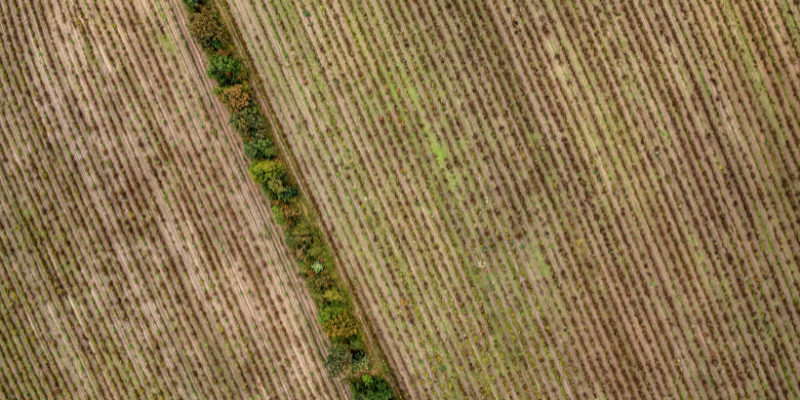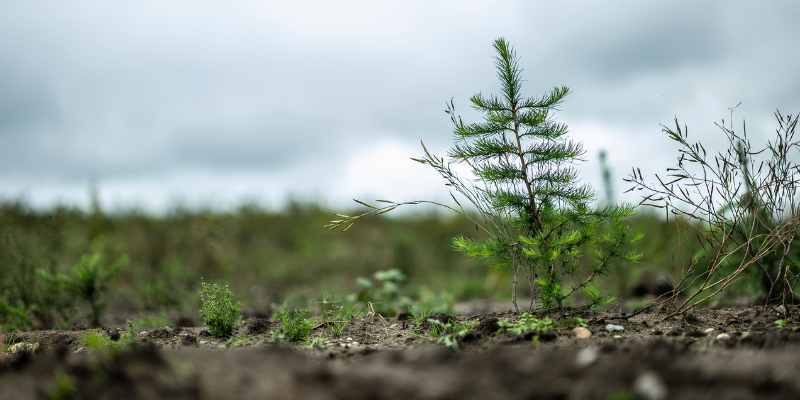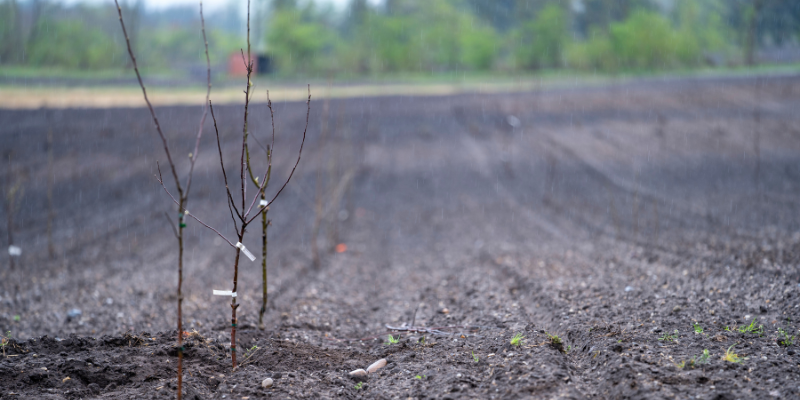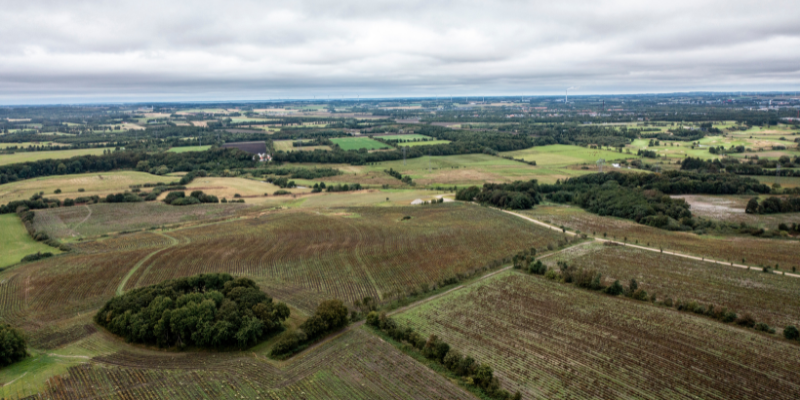
- Soil Association
- Certification
- Forestry
- Case studies
- Creating the ‘People’s Forest’ in Denmark

Creating the ‘People’s Forest’ in Denmark
Creating the ‘People’s Forest’ in Denmark
When a Danish Forest Management company were approached by a supermarket-chain with a fund to establish a new area of forest in the Jutland region of Denmark, it was a natural step to pursue FSC® Ecosystem Services verification from the beginning.
Through FSC Ecosystem Services, forest owners can demonstrate the positive impact their management practices have on the wider forest ecosystem. For the partnership, this gave them an opportunity to demonstrate the climate benefits of the carbon that will be sequestered in their newly planted forest.

Turning profits into forests
The new forest area is an initiative by Coop Folkeskove, an organisation founded by grocery-chain Coop that will oversee the creation of over 1,000 hectares of new forests in locations across Denmark between now and 2030. The project is driven by Coop’s commitment to the environment and sustainability, taking part of their profits towards establishing new forests.
To ensure the projects meet the highest standards in woodland creation, Coop Folkeskove partnered with the commercial foundation of Hedeselskabet, established in 1866 and with decades of experience in forest development. They have an established group scheme, under the forest management company HedeDanmark, a subsidiary company to Hedeselskabet, FSC-certified since 2010, that Coop Folkeskove were able to join.
By planting more forests across Denmark, Coop Folkeskove and Hedeselskabet’s vision is to increase biodiversity, strengthen local communities, and store carbon – contributing to Denmark’s national goal of a 70% reduction in CO2 emissions by 2030.

A Scandinavian first for Ecosystem Services
The new 113-hectare forest just outside Holstebro in Jutland comes under HedeDanmark’s FSC group scheme: ensuring that it’s already committed to meeting the highest standards in environmental, economic, and social sustainability. However, the group wished to take this commitment further, aware of the large amounts of carbon a newly planted forest will sequester, and their commitment to a low-carbon future.
They decided to embark on FSC Ecosystem Services certification for carbon sequestration and storage, working with WSP Danmark, Soil Association Certification’s agent in Denmark, to certify them; becoming the first project in Scandinavia to be certified under the scheme.
“Many forest owners in Denmark work hard to promote biodiversity, climate efficiency, and protection of water sources on their land,” says Michael Glud, Forest Director at HedeDanmark. “The FSC Ecosystem Services verification provides forest owners the opportunity for the additional services offered by their forests to be verified by an independent body, alongside their forest management certification.”
By obtaining the certification, via a rigorous verification process conducted by WSP Danmark, Coop Folkeskove and Hedeselskabet have been able to demonstrate that their management activities enhance carbon sequestration and carbon storage in their forest. Not only does this give them quantifiable data about their work, but Ecosystem Service claims can be used to connect with sponsors in the private sector.
“FSC Ecosystem Services offers forest owners the possibility to allow sponsors to use these claims as part of their sustainable practices. Over time, this may help to create a sponsor market for CO2 removal in the forest sector, which could in turn help improve biodiversity within the forests: this could make biodiversity services and CO2 removal more equal to timber production in the markets,” comments Michael Glud.
“When forest managements choose to supplement their FSC FM certification with an ecosystem services certification, such as carbon sequestration and carbon storage, they can use the certification to demonstrate meeting the high certification requirements and at the same time promote the benefits of their forests,” adds Karina Kitnaes, Team Leader and auditor at WSP Danmark.

Planting robust forests
The group has a 50-year plan for how the forests will develop, with the overall purpose of high CO2-binding trees and long-term production of quality wood. High-yielding conifer species such as Douglas fir and larch are an essential part of tree species selection. However, across the total forest area, conifers may not exceed 60%, and there is a significant proportion of native broadleaf tree species (30%).
The team investigated the land prior to planting to understand the particular biodiversity of the area, and what parts should remain untouched. Parts of the land previously used for farmland had been drained by the landowner to make the low-lying area less boggy. This drainage has since been reversed, which in turn will help flora and fauna native to that particular area to return and thrive.
At least 10% of the land must be preserved for biodiversity purposes, according to FSC standards. Additionally, in Denmark, there is a concept called ‘Key Biotopes’ - these are woodland habitats that provide smaller structures within a forest that must be protected: this can include old growth woodland, and small heathlands and wetlands. The team performed surveys to ensure they’re preserving these biotopes.
Working with local communities
Coop Folkeskov and Hedeselskabet have been creative with the new woodland. They’ve paid attention to details such as habitats for insects, stone hills for reptiles and homes for bees. Recreation is also a large focus for them, encouraging local people to come into and use the forest - to do this, they’ve built a walking bridge and set aside areas for people to picnic and relax.
When beginning to look at the Ecosystem Services offered by their forest, they undertook a stakeholder consultation to discover who was already using the area and for what purposes, this included local fishermen, hunting organisations, and mountain biking groups.
They also contacted the nearby town municipality to discuss creating links with the town and forest, connecting the bike paths so people can access it more easily. Each of these groups gave ideas of how they’d like to use the forest recreationally - this collaboration could allow the forest owners to add Recreational Services to their Ecosystem Services validation in the future.

A forest for future generations
Going forward, they wish to boost tourism within the forest, allowing people to visit and use it for recreational purposes. This is so that it’ll become “The people’s forest.” As this is the first Ecosystem Services verification they’ve achieved, it’s allowed them to streamline the management process, which will make further accreditation more efficient in the future, as more forests join the scheme.
“We congratulate the HedeDanmark group on their Ecosystem Services certification, which demonstrates how their practices are having a positive effect on the sequestration and storage of carbon in their forest. We hope that many more forest managers see the potential that FSC Ecosystem Services certification can offer,” concludes Meriel Robson, Director of Forestry, Soil Association Certification Forestry.
Photography by Martin Strunge.
-
Sign up to forestry news
Interested in receiving more news like this? Sign-up to our mailing list
Sign up


